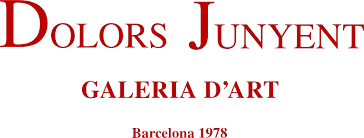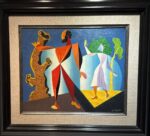Survage, Leopold
Leopold Survage, born in Moscow (Russia) in 1879. He works as an apprentice in a piano factory. In 1901 he undertakes an artistic training at the Academy of Fine Arts of Moscow (1901-1906) where he meets Larionov and Mlevitch. Leopold Survage participates in the exhibitions of the Russian avant-garde ''Stephanos'' (1907) and ''Sota de diamant'' (Valet de carreau) in 1910. He settles in Paris in 1908 and continues to paint while working as a piano tuner until 1915. His pictorial universe prefigures the surrealist universe and excites Apollinaire.
After a period of experiments during which he is interested in the rules of construction according to Cezanne and cubism, he paints abstract watercolors which he calls ''Colored Rhythms'' and which he plans to parade in front of a camera in order to create a ''pictorial symphony'' resembling a music. This project on the occasion of the declaration of war will never materialize... His first personal exhibition is organized in Paris during the First World War (1917).
Survage paints brightly colored canvases, figurative and symbolic compositions in which he dispenses with the rules of perspective; the characters are schematized and most of the time in an urban environment. In 1920 he was a founding member of the Golden Section (Gleizes, Archipenko...). Between 1919 and 1929, Survage continues his work on the theme of the city and its inhabitants, marked by his relationship with Cubism. He creates sets and costumes for Diaghilev's Russian Ballet (1922).
Leopold Survage obtains French nationality in 1927. The artist now paints figures in the foreground of his canvases and his palette darkens; from the 1930s he uses a casein emulsion that allows the colors to retain their brightness. Survage executes frescoes, book illustrations, a work on paper.
Leopold Survage who occupies an original place among the creators of the School of Paris dies in Paris in 1968.
Showing the only result

